We went inside the silversmith's workshop to see how silver is worked from the conception of the piece until it leaves the workshop.

THE MANUFACTURE OF SILVERWARE PARTS
When an order is received, the first thing that the master silversmith does is to working the design with a metal sample or a wooden mockup. This way you can show it to the customer and be sure of what is being ordered before starting work.
Once the design has been approved, the work of execution in the workshop, which may include the application of different techniquesuntil it is finished and delivered. Every silversmith knows that throughout the life of the piece from the time it is delivered, it will return several times to the workshop to be repaired from the deterioration caused by the passage of time.
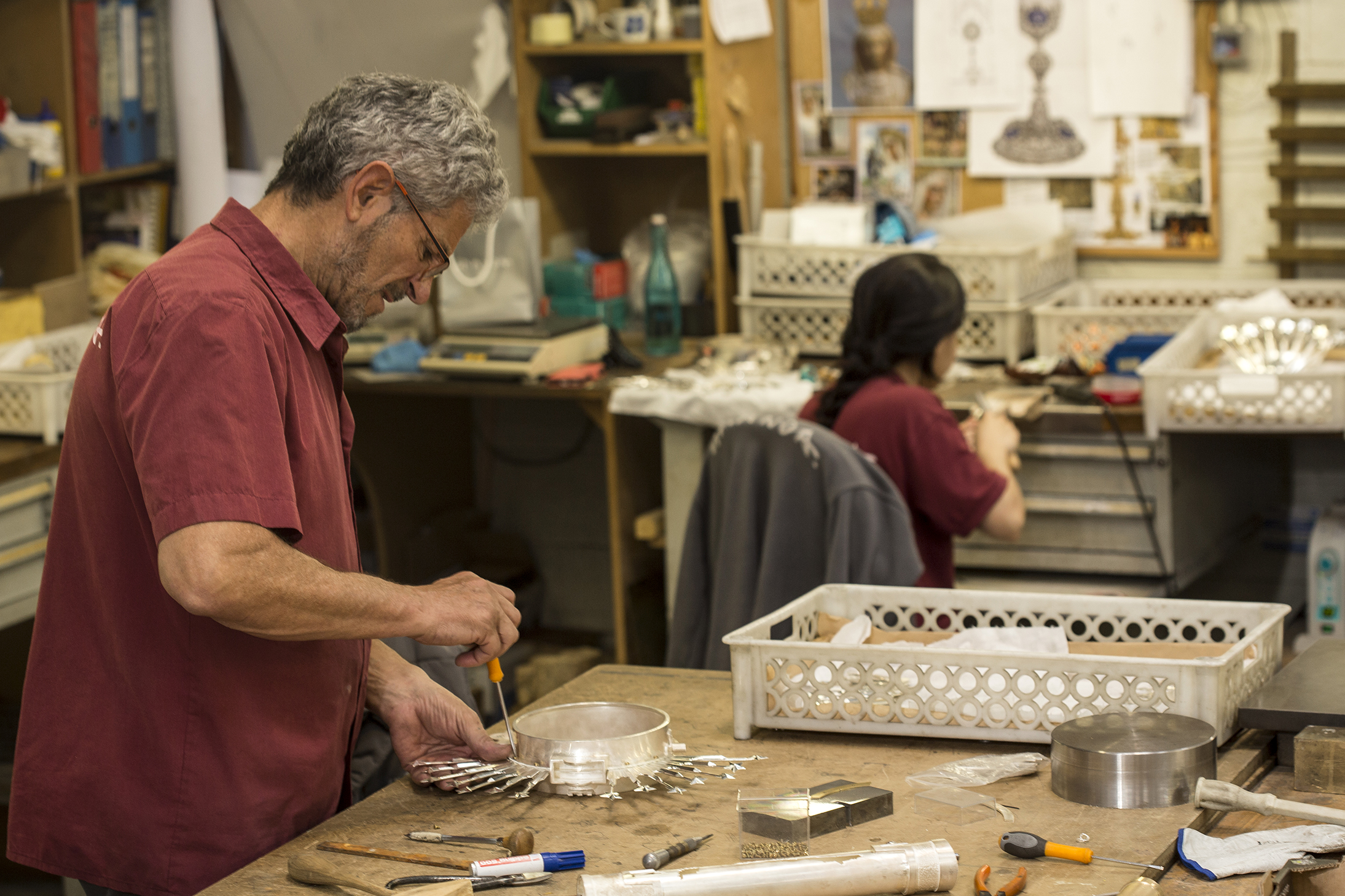
STAGES OF SILVER PREPARATION
This first phase begins with the tested. It is a first process to check the quality of the silver, which must be sterling silver to be a noble material. Traditionally, a copela, a crucible with ashes, is used to melt a portion of silver with lead. In doing so, all the impurities are absorbed by the pores, leaving only the silver in the vessel.
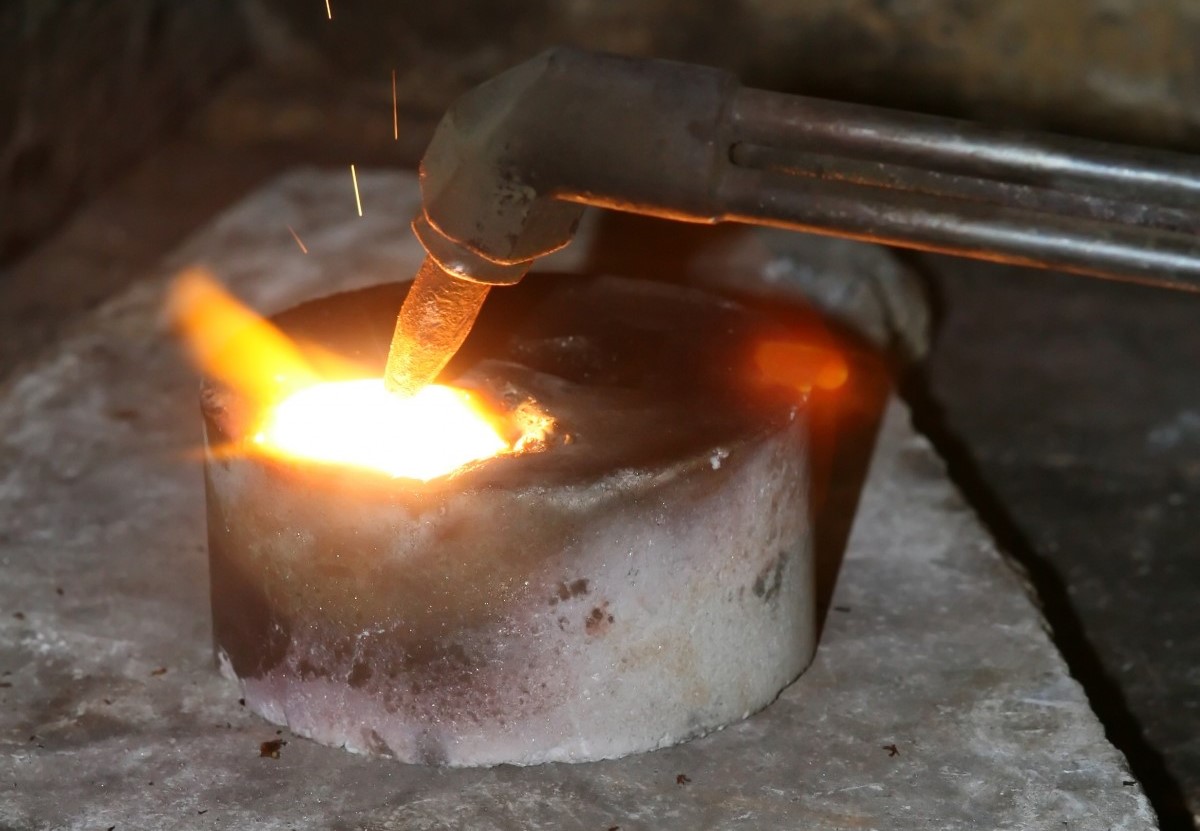
In the event that the silver needed to be purified, in the past, it was subjected to a process of tuningA cendra was used for this purpose, a kind of pot where the silver was introduced in very small metal pellets or balls and mixed with ashes and lead. Nowadays this process is not necessary because the material is obtained already purified. In addition, we have the reference of the laws of silver marking, which were born in the thirteenth century and have been varying over time, going from 916 to 915 thousandths until today, in which the purity of silver is set at 925 thousandths.
Finally, the linked, a mixture of silver and copper to harden it, and the casting in molds called rails. For casting, the silver is heated in a crucible and poured over the molds so that it can then be worked into wires or plates. In the 18th century, in order to avoid contamination by dust, the plate plate, which was simple to use for small plates, was invented. Holy Ark of Oviedo.
CONSTRUCTION TECHNIQUES

Molten silver is fragileThe crystalline structure and the spacing between molecules. To harden it, it is usually hammering to compact it. Should it become too hard, the silversmith knows that he can return it to its initial state by annealing it. There are several techniques to work itHere we explain some of them:
ESTIRADO: This technique is used to achieve metal filaments. It can be done by hand or by means of a drawing bench, passing the silver through smaller and smaller holes that refine it.
LAMINATED: This technique is used to create silver plates. Traditionally, this was done by hammering the silver on a huge flat plate, once it had been removed from the mold. In the 16th century, rolling mills and, later, wire drawing machines appeared, two inventions designed to manufacture sheets by compression.
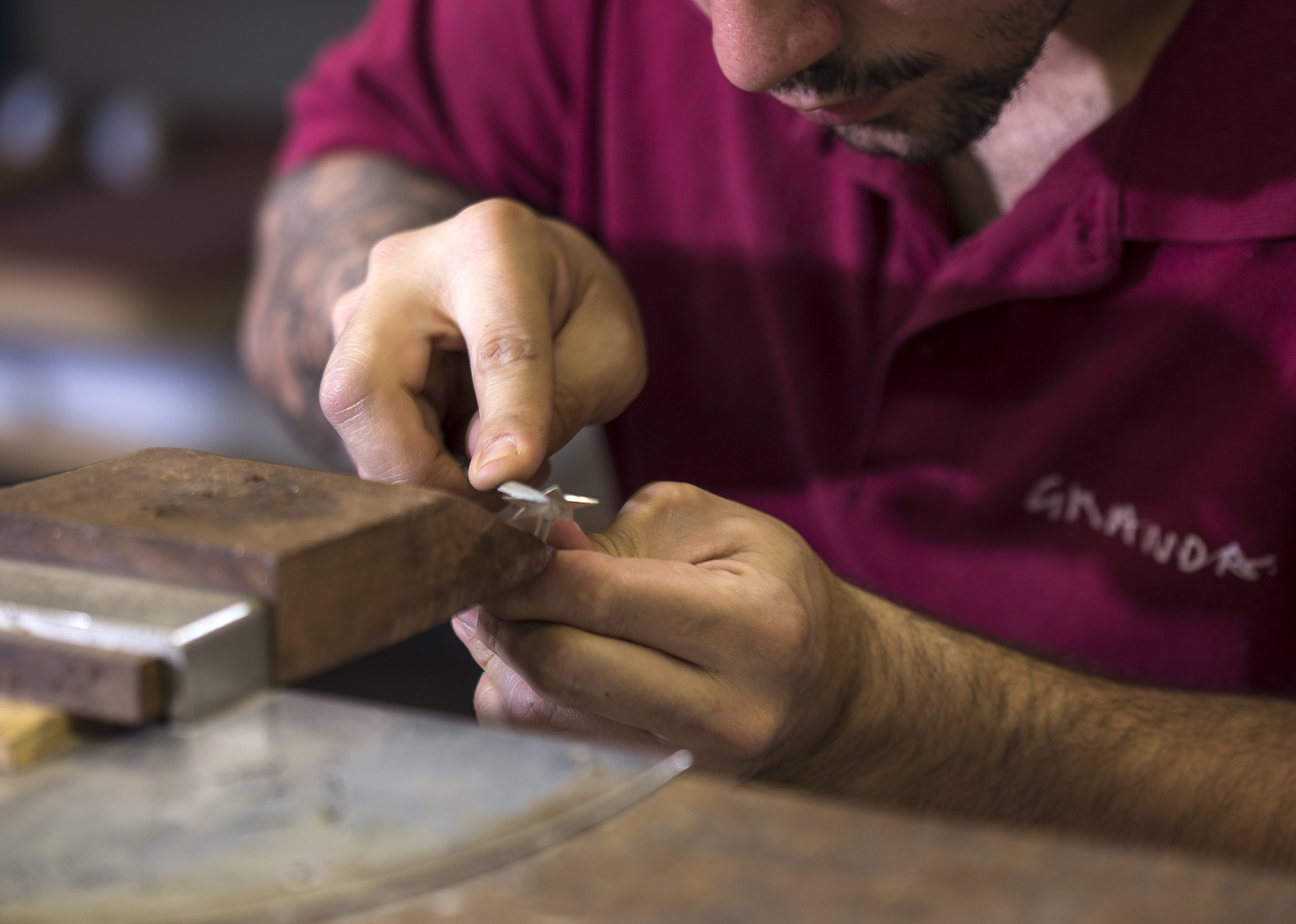
CUTTING, FRETWORK AND FILING: These techniques of cutting of the workpiece and correction of surface imperfections is carried out with specific tools, such as shears, scissors and files. Also used are cutting chisels, with a sharp, cutting tip, metal-cutting dies with a filament and disc or ball drills.
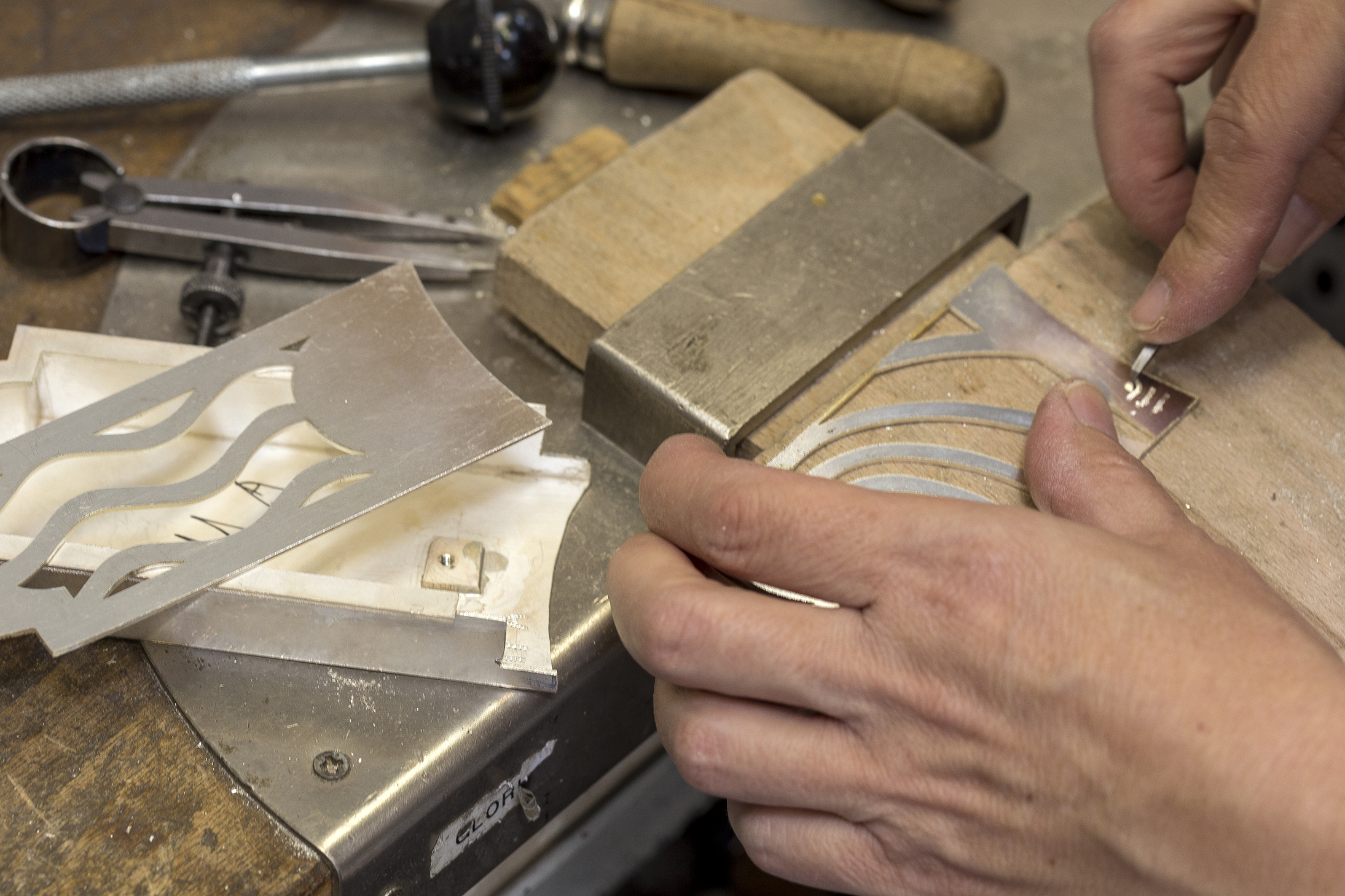
GRIFADO: Consists of the plate bending and folding. For this purpose, the punch and the tap are used, two tools with which grooves are marked to weaken the sheet metal. In this way, the metal is easily bent without breaking. The sheet is then cut and the joints are welded, paying special attention to the angles.
COLD-FORMED: Traditionally, this technique is performed a forging. This is how the most typical forms of silverware are achieved. It allows to make all kinds of shapes, beating the foil over the or on a boxwood mold. with a hammer blowThe sound of the hammer on the silver, called "acoustic examination", is essential for the silversmith and guides his work. The sound of the hammer on the silver, called "acoustic examination" is essential for the silversmith and guides his work.
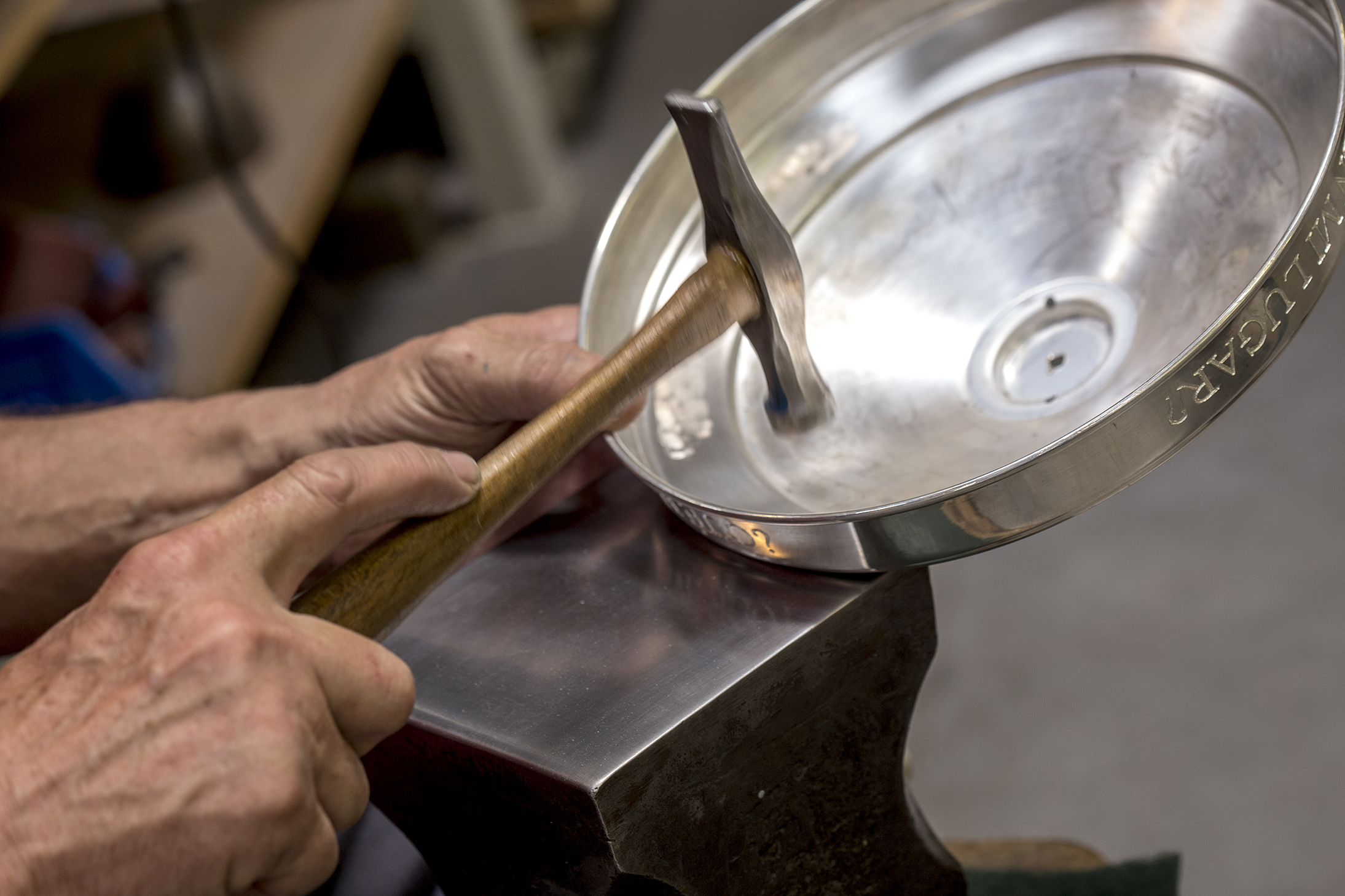
From the twentieth century onwards, the notching techniqueonly for the production of circular parts. Silver is not like iron, which must be forged red hot; silver is forged cold and there is no need to heat the piece. The silversmith, with a flat hammer, removes the marks and smoothes it.
FOUNDRY The best known foundry is to the lost waxbut there is also the sand casting. It consists of the casting of the piece using a hard model. A refractory sand is used to make the mold; the silver is introduced through sprues and thus reproduces the obverse and reverse.
JOINTING The most important is soldering with silver wire or rod and torch. After soldering, it is put in bleach, a corrosive that eats the excess material. Reinforcements have always been used: small bolts that secure the piece, rivets, cotter pins, nails, staples, hinges, eyebolts... Screws as we know them today appeared around the 16th century.

So far the manufacturing techniques. Soon we will talk in our blog about the ornamentation techniques (chiseling, embossing...) and the less known but very important finishing techniques.
